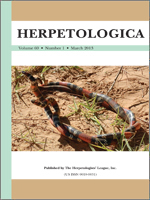The ecology of the genus Thamnodynastes has received little study, and problems with its taxonomy have generated imprecise and incorrect data. We analyzed the reproductive biology, sexual dimorphism, feeding ecology, habitat use, and seasonal activity of Thamnodynastes hypoconia in its subtropical–temperate area of distribution. We discuss its main ecological traits in light of the competition and predation, and the deep-history hypotheses. Males and females attained sexual maturity at different body sizes, with females achieving the largest sizes. In this species, the males and females had no difference in the body size, and males had more ventral scales than did the females. The females' reproductive cycle was seasonal and not annual, with parturition occurring in summer, whereas the cycle of the males was continuous. Thamnodynastes hypoconia feeds mainly on amphibians (97%) and occasionally on lizards (3%). As in other Thamnodynastes snakes, hylid frogs were the most common type of prey consumed (34%). Thamnodynastes hypoconia is primarily a twilight–nocturnal species that inhabits wetlands (large rivers and their floodplains), where its prey is abundant. Its activity is seasonal, with a high number of individuals encountered during the warm months. The similarity between the natural history traits of T. hypoconia (anurophagy, seasonal reproductive cycle, aquatic and nocturnal habits) and other species of the genus suggests there is phylogenetic conservatism, mainly of its ecomorphological traits, which is a pattern commonly reported for Dipsadidae snakes.
How to translate text using browser tools
1 March 2013
Ecology of Thamnodynastes hypoconia in Subtropical–Temperate South America
Gisela P. Bellini,
Vanesa Arzamendia,
Alejandro R. Giraudo
ACCESS THE FULL ARTICLE

Herpetologica
Vol. 69 • No. 1
March 2013
Vol. 69 • No. 1
March 2013
Competition–predation hypothesis
Deep-history hypothesis
diet
habitat use
reproduction
reproductive cycle
snake




